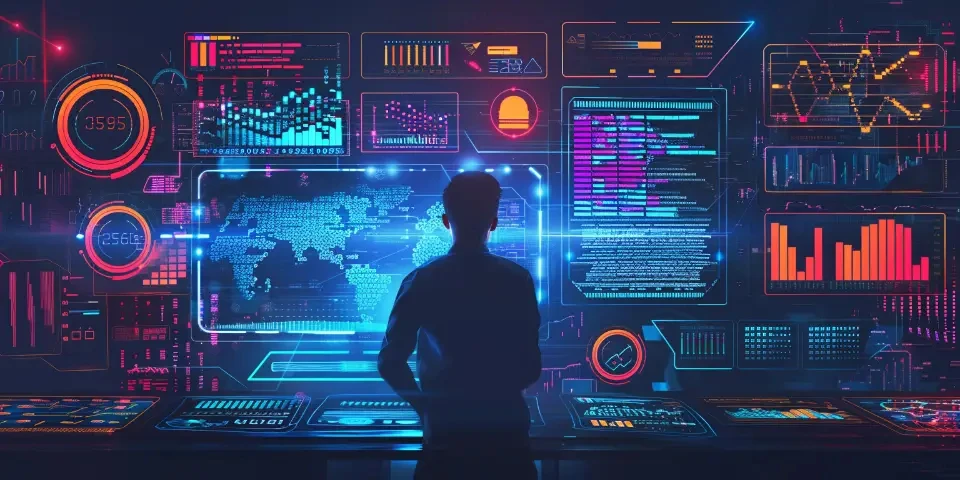AI-Powered Education How Technology is Reshaping Learning
Education is undergoing a significant transformation with the integration of artificial intelligence (AI) technology. AI-powered educational solutions are revolutionizing the traditional learning methods by providing personalized, adaptive, and interactive experiences for students. In this article, we will explore how technology is reshaping learning from various perspectives.
1. Personalized Learning
AI algorithms analyze students' learning patterns, strengths, and weaknesses to create personalized learning paths. This individualized approach allows students to progress at their own pace and focus on areas where they need improvement.

2. Adaptive Assessments
AI-powered assessment tools evaluate students' knowledge and adapt the difficulty level of questions accordingly. This adaptive assessment ensures that students are challenged appropriately and receive accurate feedback on their progress.
3. Intelligent Tutoring Systems
Intelligent tutoring systems use AI to provide personalized guidance and support to students. These systems adapt their instruction based on students' needs, provide immediate feedback, and offer additional resources to enhance learning.
4. Natural Language Processing
AI's natural language processing capabilities allow students to interact with educational platforms through voice commands and textual inputs. It enables virtual assistants and chatbots to answer students' queries, provide explanations, and offer guidance in real-time.
5. Gamification
AI-powered gamification techniques make learning engaging and enjoyable. By incorporating game elements such as points, badges, and levels, educational platforms motivate students to actively participate and increase their learning outcomes.
6. Data Analysis and Insights
AI algorithms can analyze vast amounts of data collected from students' interactions to provide valuable insights to teachers. These insights help identify learning gaps, track students' progress, and customize teaching strategies based on individual needs.
7. Virtual Reality (VR) and Augmented Reality (AR)
VR and AR technologies powered by AI provide immersive experiences that enhance learning. These technologies enable students to explore realistic simulations, perform virtual experiments, and visit virtual historical sites, bringing subjects to life.
8. Intelligent Content Creation and Curation
AI algorithms can automatically generate and curate educational content, saving teachers' time and effort. With the capability to evaluate and aggregate information from various sources, AI ensures the availability of high-quality and up-to-date resources.
9. Remote Learning
AI-powered remote learning platforms enable seamless collaboration between teachers and students, regardless of geographical constraints. These platforms facilitate virtual classrooms, online assignments, and real-time interaction, ensuring continuity in education during challenging times.
10. Social and Emotional Learning (SEL)
AI can support students' social and emotional development by analyzing their behavior and providing personalized feedback. It facilitates the identification of emotional patterns, offers mental health support, and helps in nurturing students' social skills.
11. Cybersecurity and Privacy
As technology advances in education, it is crucial to address cybersecurity and privacy concerns. AI-powered security systems can detect and prevent data breaches, protect sensitive information, and ensure the integrity of educational platforms.
12. Teachers' Support
AI-powered tools assist teachers by automating administrative tasks, generating analytical reports, and providing recommendations for effective teaching strategies. This support allows teachers to focus more on instruction and individual student guidance.
13. Lifelong Learning and Skill Development
AI-powered education promotes lifelong learning by enabling personalized upskilling and reskilling opportunities. It tailors learning content to match individuals' career goals and provides continuous learning support throughout their professional journey.
14. Accessibility and Inclusivity
AI helps make education accessible to a broader range of learners, including those with disabilities. It offers features like text-to-speech, screen readers, and closed captions, ensuring inclusivity and equal opportunities for all students.
15. Ethical Considerations
As AI becomes integrated into education, ethical considerations such as algorithm transparency, bias detection, and data privacy must be carefully addressed. Policies and guidelines need to be established to ensure responsible and equitable use of AI-powered educational systems.
Frequently Asked Questions (FAQs)
Q1: Will AI replace teachers?
A1: AI is not meant to replace teachers but rather to enhance their roles. It assists teachers in providing personalized support, automating administrative tasks, and improving instructional strategies.
Q2: Is AI-powered education cost-effective?
A2: While AI-powered education may require initial investments, it can ultimately lead to cost savings by automating tasks, reducing the need for physical resources, and enhancing educational outcomes.
Q3: How can AI ensure fair assessment of students?
A3: AI algorithms are designed to detect and mitigate biases in assessments. By analyzing vast amounts of data, AI can identify patterns of fairness and provide equitable evaluation methods.
References:
1. Johnson, M., Watson, R., & Wilson, H. (2021). Artificial Intelligence in Education: Promises and Ethical Challenges. Journal of Formative Design in Learning, 5(1), 12-27.
2. Pei, L., & Wu, L. (2020). Does artificial intelligence have a place in education? Big Data as a Lens for Theoretically-based Affordances of AI in Education. British Journal of Educational Technology, 51(2), 623-641.
3. S?nmez, V., Da?c?, ?. ?., Demirel, L., & Gelbal, S. (2017). Designing or Evaluating Games for Learning. Handbook of Research on Teacher Education in the Digital Age, 154-173.
Explore your companion in WeMate